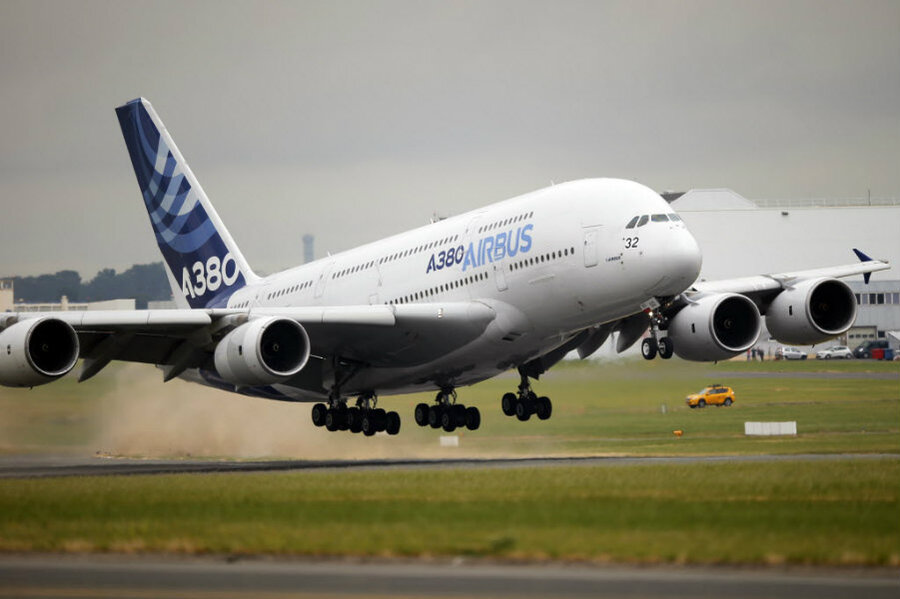New plane seating design sits passengers face-to-face. Will it fly?
Loading...
Imagine having to stare at your fellow passengers for the duration of an economy-class flight.
A new seating configuration, patented by industry supplier Zodiac Seats France, could make that introvert’s nightmare a reality. Called the “Economy Class Cabin Hexagon,” the plan has travelers sitting side-by-side, with the middle seat facing the rear of the plane.
The design – which calls to mind Solomon Asch’s classic elevator experiment caught on the 1960s television show “Candid Camera” – marks the latest in a series of seating plans that seek to let planes carry more people, as airlines strive to increase profits.
“A push over the past decade by carriers to expand higher-fare sections has shrunk the area devoted to coach on many big jetliners,” Jon Ostrower and Daniel Michaels wrote for The Wall Street Journal in 2013. “But airlines don’t want to drop passengers. So first airlines slimmed seats to add more rows.”
Then carriers began “cutting shoulder space by wedging an extra seat into each coach row,” they noted. “The new trend … reverses half a century of seat growth in economy class.”
Over the last few years, carriers have looked at a range of seating options that maximize passenger numbers without increasing floor space.
In 2014, Delta announced it would be adding 19 more seats on its Boeing 757-200s by using “slim-line” designs that have smaller, lighter frames. United Airlines has also proposed 10- instead of nine-abreast seating for its new order of Boeing 777s. If the plan pushes through, United would join Air Canada, Air France-KLM, Japan Airlines, and Alitalia, all of which have already increased the number of passengers per row by shrinking seats.
In April, Airbus said 11-abreast seating will be available as the “budget” class layout on its A380 planes. Standard economy class will still exist – at a slightly higher price, Christopher Emerson, the company’s senior vice president for marketing, told aviation consultancy Leeham Co.
“Ninety percent of world travelers are economy. But not all are homogenous,” Mr. Emerson said. “It’s becoming more and more complex. You are segmenting the cabin space, pricing by different seats. We want to give a choice to the 90 percent of the economy passengers.”
To be fair, Zodiac Seats’ new design, patented by the World Intellectual Property Organization in June, seeks to address both airlines’ need to increase cabin density “while also creating seat units that increase the space available at the shoulder and arm area” – a goal they seem to have achieved because, as Wired’s Jordan Golson noted, when you’re no longer facing the same direction as your immediate neighbor, you’ll have more shoulder room.
That hasn’t stopped critics, Mr. Golson included, from denouncing the plan.
“If you’re around the sort of people one usually sits next to on airplanes, it would be horrible,” he wrote. “At least if you’re all facing the same direction, you can pretend they don’t exist. Here, if you’re a human with peripheral vision, fat chance of that.”
The Verge called it an “evil plane seat design” that would “ruin whatever good remains of air travel.”
Fortune’s Claire Zillman added, “We’re guessing that passengers would rather have their arms totally immobilized instead of having to sit inches away from strangers, while positioned face-to-face.”
For now, though, passengers can breathe easy: Zodiac’s “Hexagon” is still a patent, and the company has no plans of executing it – and even if it did, the design would have to pass a slew of tests before becoming a reality.
“So that buys you some time to save up your money for a private jet,” Golson wrote, “or at least a business class seat.”








